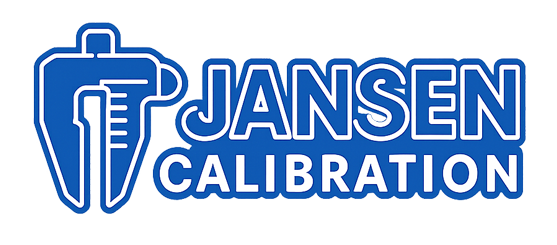No products in the cart.

Originally published: June 9, 2016
Last updated: July 2025 — Updated with current technologies, calibration procedures, and 2025-compliant process standards.
As of 2025, loop calibrators continue to evolve with features like HART compatibility, dual-channel sourcing/measurement, and built-in documentation tools. Models like the Fluke 725Ex and Beamex MC6 now support hazardous environments and integrate seamlessly with digital maintenance systems.
For process technicians in sectors like oil & gas, water treatment, and pharma, keeping these instruments regularly calibrated to ISO 17025 standards is critical to maintaining measurement traceability and compliance with industry audits. New trends also include cloud-based calibration data logging and automated error detection during loop testing.
🔗 Related Internal Links:
In process industries, maintaining the accuracy and reliability of control systems is not just important—it’s critical. From flow meters to pressure transmitters, these instruments depend on the precision of 4-20mA current loops for communication and control. That’s where loop calibrators come in. These specialized instruments are essential for commissioning, troubleshooting, and calibrating control systems across multiple industrial sectors.
In this article, we’ll explore what loop calibrators are, how they work, and why they’re indispensable to process technicians working in oil & gas, pharmaceuticals, power generation, and beyond.
🔄 What is a Loop Calibrator?
A loop calibrator is a handheld device designed to source, simulate, and measure current signals—typically within the 4-20mA range—used in industrial instrumentation loops. These loops are the backbone of analog communication in control systems, providing real-time data to PLCs (Programmable Logic Controllers) or DCS (Distributed Control Systems).
There are two types of calibrators:
Source/Simulate Calibrators: Inject a current signal into the loop to test the receiving device (e.g., controller).
Measure Calibrators: Measure the output from transmitters or field instruments.
Some advanced models can perform both functions, along with voltage simulation, loop power supply, and even HART communication.
🔗 Related Internal Link: Pressure Calibrators Collection
⚙️ Common Features in Modern Loop Calibrators
Modern loop calibrators are designed for field use, with rugged enclosures and multifunctional capabilities. Essential features include:
4-20mA Sourcing and Simulation
Loop Powering (24V DC) for testing passive transmitters
Step and Ramp Output for dynamic testing
Simultaneous Measurement and Sourcing
Built-in HART Communication Support (for compatible models)
High Accuracy (±0.015% or better)
Graphical Displays and Memory Logging
Popular models often include robust battery life and are engineered to function in harsh field conditions.
🧰 Where Are Loop Calibrators Used?
Loop calibrators are vital across a range of industrial applications, particularly in:
Oil & Gas Refineries – Calibrating flow, pressure, and temperature transmitters.
Pharmaceutical Plants – Verifying sensors used in sterile environments.
Water Treatment Facilities – Ensuring accurate dosing and flow measurement.
Power Plants – Maintaining feedwater and boiler control loops.
Food & Beverage – Checking CIP (Clean-In-Place) system accuracy.
🛠️ Top Recommended Loop Calibrators (2025)
Here are three highly trusted loop calibrators available on our platform:
Fluke 710 Loop Calibrator – Compact and simple to use, ideal for daily maintenance checks.
Additel ADT875PC-660-B VIP KIT – Multifunction device with voltage/current sourcing, simulation, and logging.
Beamex EXT600 – Advanced portable calibrator with full HART, Profibus PA, and Fieldbus Foundation support.
Each product includes a traceable calibration certificate from our ISO 17025-accredited lab.
🔗 Related Internal Link: Loop Calibrators
🧪 How to Calibrate a Transmitter Using a Loop Calibrator
Here is a simplified step-by-step guide to calibrate a 4-20mA pressure transmitter:
Connect the loop calibrator in series with the transmitter and power source.
Apply known pressure using a pressure pump.
Read the current output and compare with expected values.
Adjust zero/span on the transmitter if the current is out of tolerance.
Repeat the cycle to verify linearity and accuracy.
Always document the results and compare them against your calibration procedure or SOP.
🔗 Related Internal Link: Pressure Calibrators
📋 Compliance & Calibration
In regulated industries, loop calibrators play a direct role in ensuring compliance with standards such as:
ISO 9001
GMP (Good Manufacturing Practice)
FDA 21 CFR Part 11
ISA/IEC 61511 (Functional Safety)
Maintaining a schedule of instrument calibration, supported by valid documentation, is key to passing audits and maintaining operational excellence.
✅ Conclusion
Loop calibrators are critical instruments in any industrial maintenance or commissioning toolkit. Their ability to test and simulate current loops ensures that sensors, transmitters, and control systems are performing optimally. As process automation becomes more complex, the need for high-accuracy, multifunctional loop calibrators continues to grow.
At JansenCalibration.com, we support your precision goals by offering top-rated products, expert support, and ISO-accredited calibration services.
🛒 Explore our Loop Calibrator Selection or contact our team to get personalized advice for your industry.
